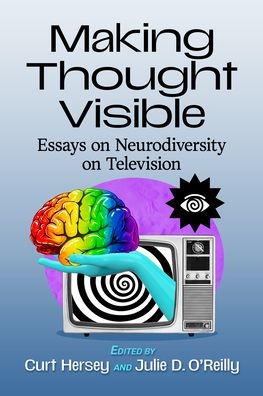Examined themes include the muting of neurodiverse voices, madness as power, diagnosis vs. lived experience, dual diagnosis, reactions to "atypical" behaviors, the cultivation of attitudes towards autistic individuals, and translanguaging across global series. Programs include Young Sheldon, The Good Doctor, Legion, the Star Trek universe, Euphoria, True Detective, Girls, Bungo Stray Dogs, and Love on the Spectrum. Varied theoretical and methodological approaches and attention to the quality and verisimilitude of neurodiverse representations result in an appropriately complex analysis.
Examined themes include the muting of neurodiverse voices, madness as power, diagnosis vs. lived experience, dual diagnosis, reactions to "atypical" behaviors, the cultivation of attitudes towards autistic individuals, and translanguaging across global series. Programs include Young Sheldon, The Good Doctor, Legion, the Star Trek universe, Euphoria, True Detective, Girls, Bungo Stray Dogs, and Love on the Spectrum. Varied theoretical and methodological approaches and attention to the quality and verisimilitude of neurodiverse representations result in an appropriately complex analysis.

Making Thought Visible: Essays on Neurodiversity on Television
264
Making Thought Visible: Essays on Neurodiversity on Television
264Paperback

Product Details
| ISBN-13: | 9781476691565 |
|---|---|
| Publisher: | McFarland & Company, Inc., Publishers |
| Publication date: | 08/03/2025 |
| Pages: | 264 |
| Product dimensions: | 6.00(w) x 9.00(h) x 0.53(d) |
| Age Range: | 18 Years |
